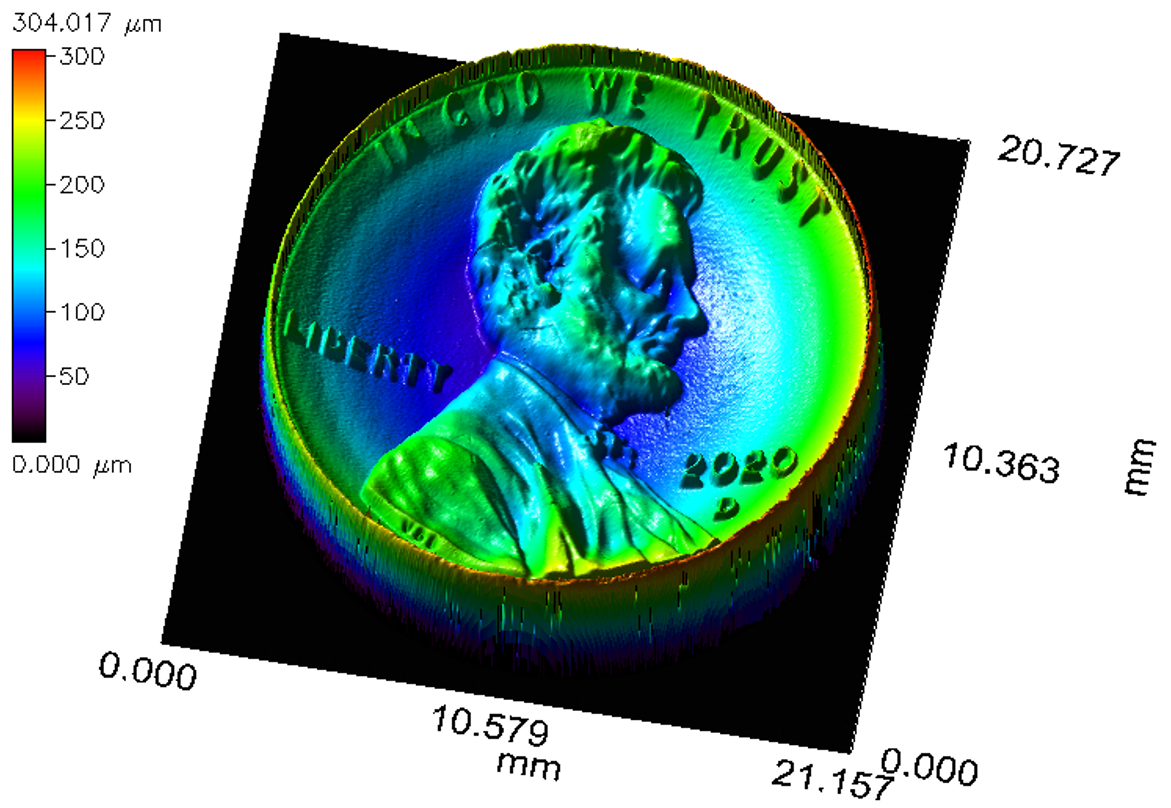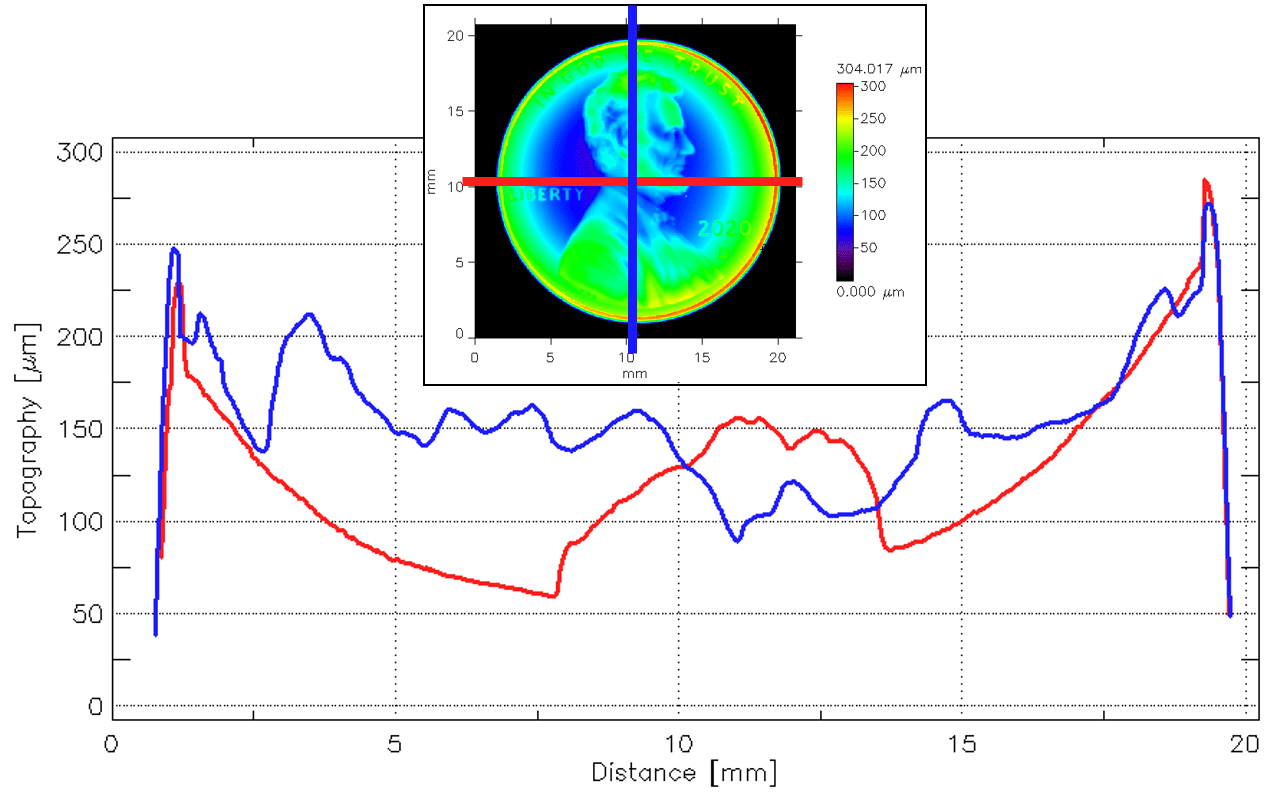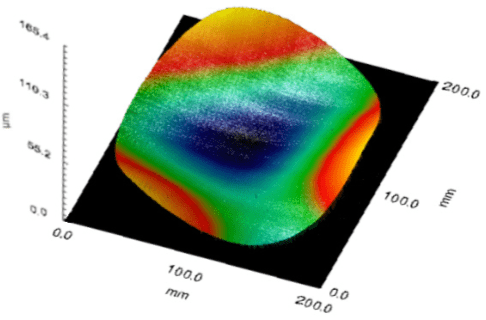Chromatic Dispersion Profilometry (CWL)
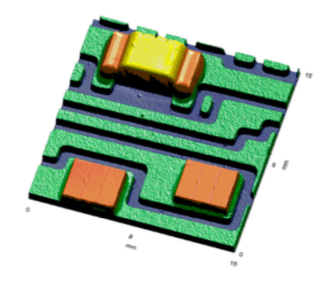
Chromatic dispersion profilometry or Chromatic white light (CWL) profilometry is a non-contact, nondestructive analytical technique used to measure surface topography. It is particularly well suited for large-area characterization (e.g. whole wafers) requiring high vertical accuracy.
Strengths
- High vertical accuracy (within a few hundred nm for mapping, or as low as single nm for point scan)
- Able to measure large sample areas (up to full 300mm wafers)
- Captures 3D height map of full surface curvature, warp, and flatness
- Effective at characterizing interfacial topographies through transmissive overlayers
Limitations
- Slower data collection for high lateral resolution mapping as compared to other surface topography methods
- Thickness measurement of transparent / translucent films only possible under certain conditions
- Stage translation artifacts (typically a few hundred nm) limit ability to measure extremely flat surfaces
- Difficulty measuring steeply sloped surfaces (>30°)
- Changes in sample reflectivity (particularly if wavelength dependent) can affect the measurement.
